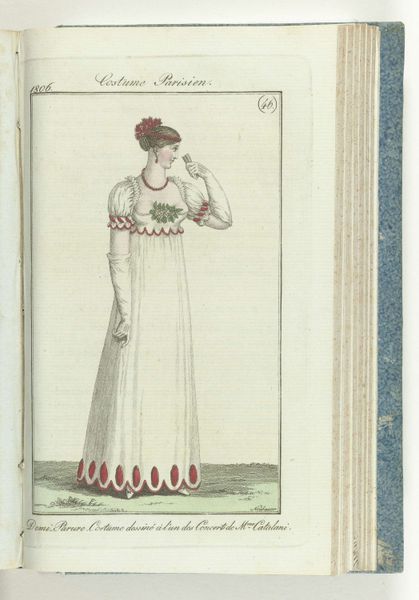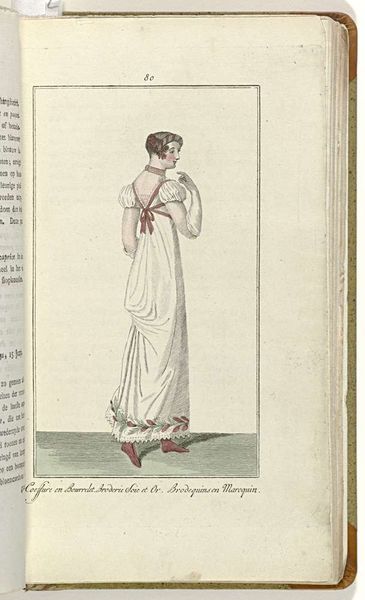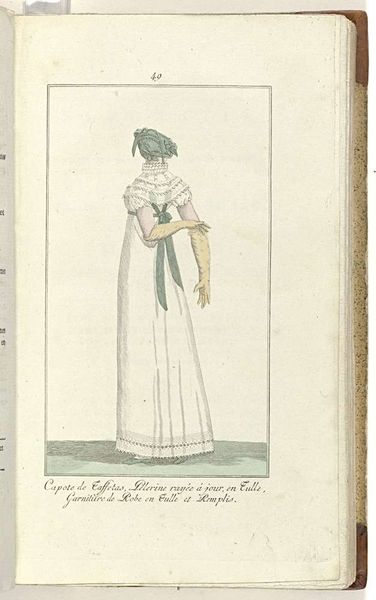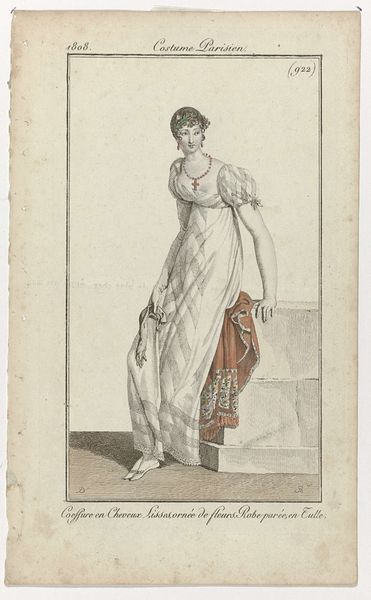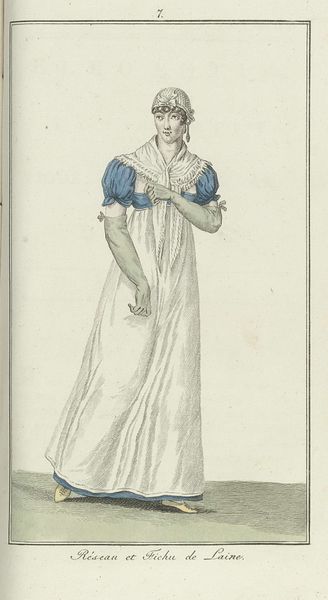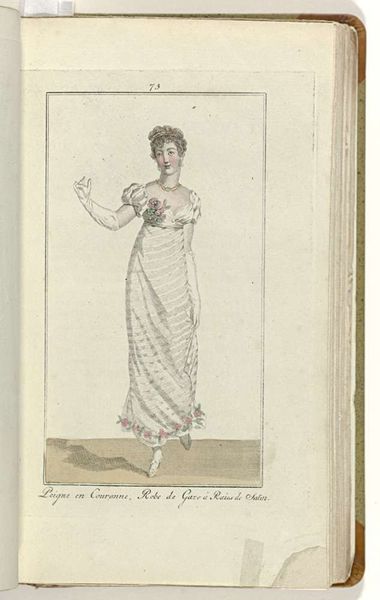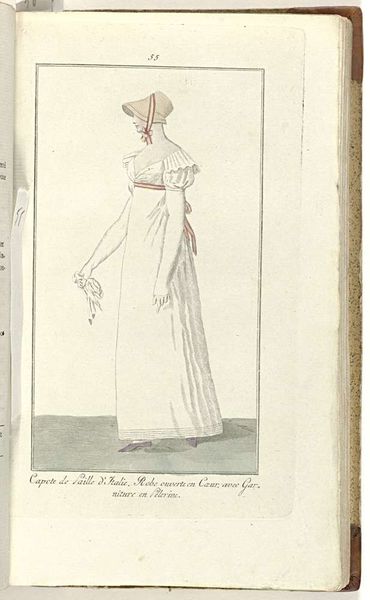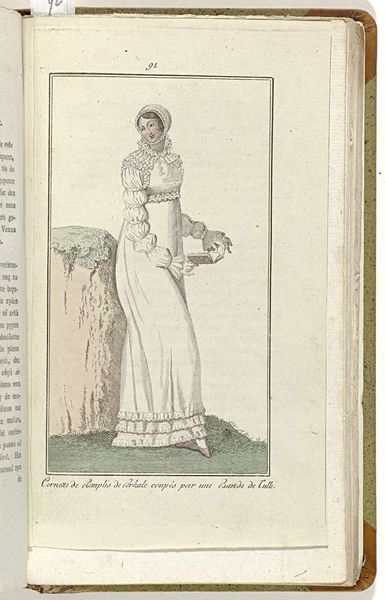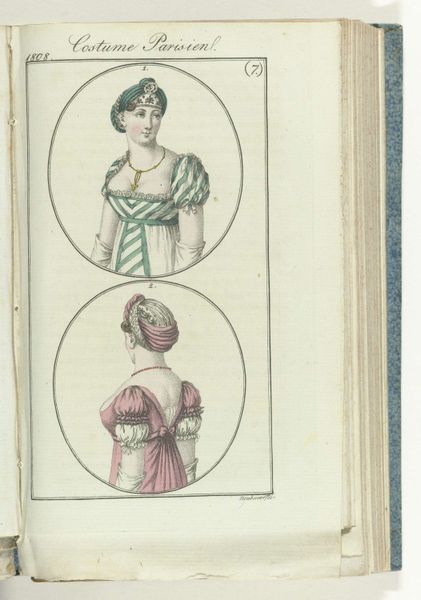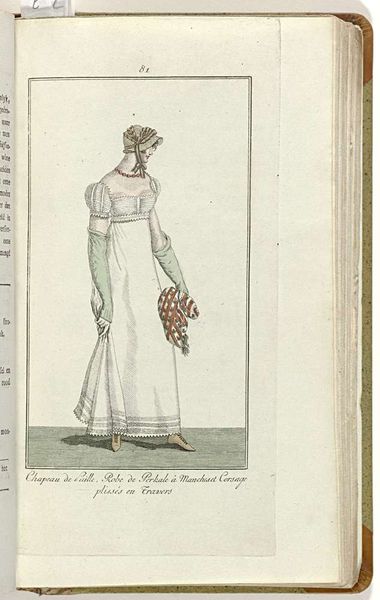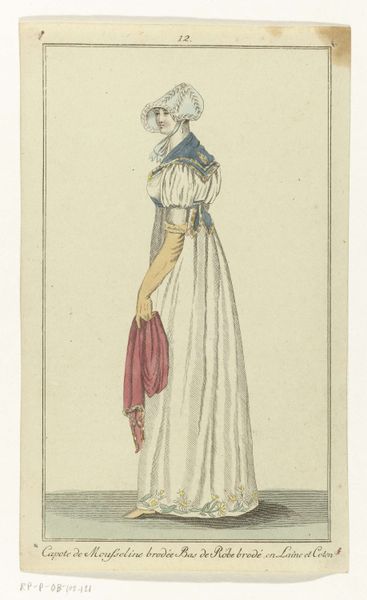
Journal des Dames et des Modes, editie Frankfurt 16 octobre 1808, Costume Parisien (42) : Coeffure en Cheveux Lisses, ornée de fleurs. Robe parée en Tulle. 1808
0:00
0:00
drawing, coloured-pencil, paper, ink
#
drawing
#
neoclacissism
#
coloured-pencil
#
paper
#
ink
#
coloured pencil
#
genre-painting
#
history-painting
Dimensions: height 188 mm, width 115 mm
Copyright: Rijks Museum: Open Domain
Editor: So, here we have “Journal des Dames et des Modes,” from 1808, a drawing with coloured pencil and ink by Friedrich Ludwig Neubauer. The woman's elegant, but the setting looks… staged, almost like a classical frieze. What do you make of it? Curator: It’s crucial to understand this image not as a portrait of an individual, but as a document of its time. Consider the social role of fashion plates in the early 19th century. Editor: You mean beyond just showing off the latest styles? Curator: Precisely! Publications like this one dictated taste, reinforced class distinctions, and propagated specific ideals of femininity. Note the woman's dress – the high waist, the delicate fabric – echoing the Neoclassical obsession with antiquity. Editor: So, the classical pose and backdrop… Curator: Yes, they weren't accidental. They align the sitter – and, by extension, the reader aspiring to such fashion – with the virtues and aesthetic ideals of ancient Greece and Rome. How might this plate be constructing an idea of French identity during the Napoleonic era? Editor: I guess it's less about the actual clothes and more about conveying status through cultural association, using a style accessible only to a specific class? Curator: Exactly. The image, therefore, functions less as an objective representation of fashion and more as a subtle instrument of social power. Did it promote certain ideas about wealth, class and nationality? Editor: Wow, I hadn’t considered the magazine itself playing such an active social role. It really challenges the way I view these kinds of images. Curator: Indeed, art rarely exists in a vacuum. Examining the institutions and social structures surrounding its creation unveils richer and more nuanced narratives.
Comments
No comments
Be the first to comment and join the conversation on the ultimate creative platform.
